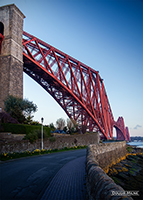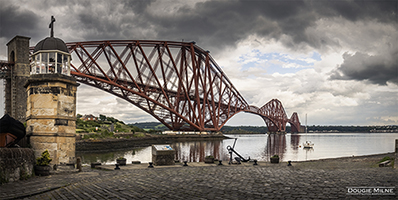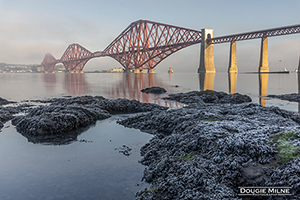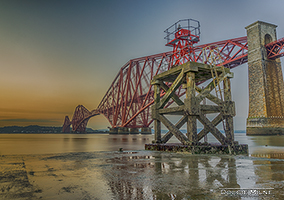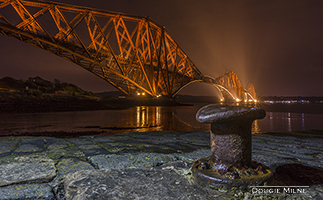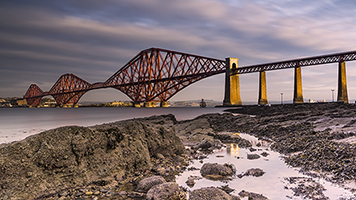Forth Bridge Wall Art
The Forth Bridge is an iconic railway bridge located in Scotland, spanning the Firth of Forth near the city of Edinburgh. It is one of the most famous engineering landmarks in the world and is recognized as a UNESCO World Heritage Site. The bridge connects the villages of South Queensferry and North Queensferry, carrying the railway line across the estuary. The Forth Bridge was designed by Sir John Fowler and Sir Benjamin Baker, and construction began in 1883. It took around eight years to complete and was officially opened on March 4, 1890. The bridge was built to replace an earlier ferry service and accommodate the increasing rail traffic between Edinburgh and the north of Scotland. The most notable feature of the Forth Bridge is its distinctive cantilever design. It consists of three main towers, each standing at a height of 110 meters (361 feet), which support two massive latticework structures on either side. The bridge spans a total length of approximately 2.5 kilometres (1.5 miles) and includes a double-track railway that runs across it. The construction of the Forth Bridge was a significant engineering feat of its time. It utilized advanced construction techniques and materials, such as steel and rivets, which were relatively new at that time. The bridge was built to withstand the harsh Scottish weather, including strong winds and saltwater corrosion. The Forth Bridge is not only a marvel of engineering but also a symbol of Scotland's industrial heritage. It has become an iconic landmark, often depicted in photographs and paintings. The red colour of the bridge, known as Forth Bridge Red, has become synonymous with the structure itself.

